by Kenan White | Sep 19, 2012 | Basics, Gardening, Growing, Herbs, Life on the Farm, Seeds |
Growing herb plants presents many challenges. Almost all are species plants and have their own requirements for germination, growth, and peaceful establishment in someone’s garden. When The Growers Exchange decided to grow only herb plants, we quickly found ourselves pretty much all alone in our commercial greenhouse community. When growing more common plants, we could always call around and find extra plants when needed.
Not so with many herb plants! Finding fresh seed for basil, cilantro, parsley, and all the popular culinary herbs is easy. But if we run out of plants, our neighboring greenhouses will be full with geraniums and other flowering plants. If we run out, then we are out! But this inconvenience is small compared to consistently finding seeds for the less known herbs such as White Sage and Holy Basil. Only a few seed companies sell rare herb seeds. Once certain seeds have been located, they must also be viable. Meaning they must be fresh enough to germinate.
Finding fresh seed for rare herbs is always chancy, and we watch closely to see that we can try again if a batch fails to germinate. To even the odds that we sow fresh viable seed, we have grown our own herb plants in a garden next to the farm office. Seeds are harvested and dried in an old smokehouse. We still must buy seeds, but we also have the seeds we grew, which are very fresh. This doesn’t solve all the problems, but helps plenty and gives us a proactive way to keep a fresh supply of seeds.
by Kenan White | Sep 12, 2012 | Basics, Gardening, Herbs |
We are having a few end of the month visitors to our test gardens and set about cleaning them up about 2 weeks ago. Cleaning out debris, cutting back all of our herb plants, and actually taking in a good harvest. We have pesto to get us through the winter, and a lot of dried herbs to make sure that our stews and savories are outstanding. We even renovated our smoke house and we are doing a lot of drying flowering herbs. Hot work in the middle of a muggy summer but oh, my, it was worth it.
Just strolling through this weekend and was delighted by the amount of blooms that we have – another chance before fall and winter settle in. So, if you are a Zone 7 or above, don’t forget that you might have a chance. This test bed is astounding and reminds us all that herbs in a landscape are invaluable. What started as an after thought has really taken on a life of its own. We keep adding to the beds and right now, they are a butterfly and bee magnet.
Bottom line: the garden is never finished so neither is the gardener. Use a good pair of clippers and make a plan ahead of time, or you will end up tossing some very valuable harvest. For whatever reason (think if I back up 9 months to New Year’s Eve if have it figured out) a lot of my friends and family have September birthdays and I have been making a lot of herb bouquets. Ball jars make very lovely and inexpensive vases.
Pictured below, left to right: Joe Pye Weed, Datura, Evening Fragrance, Feverfew, Dill, Costmary.
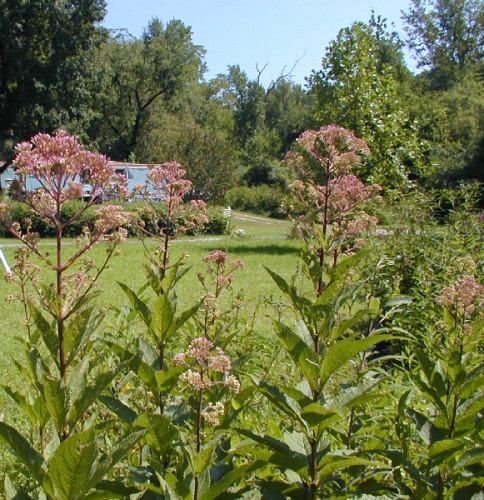
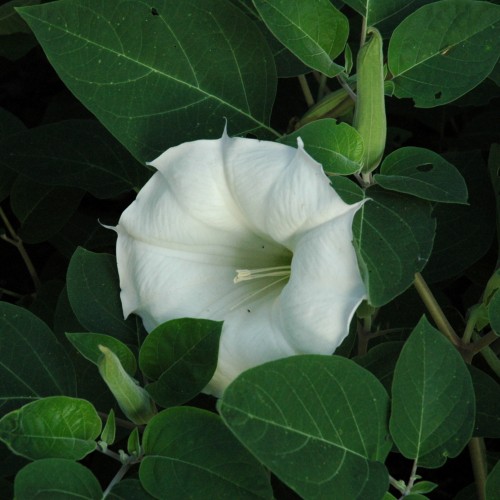
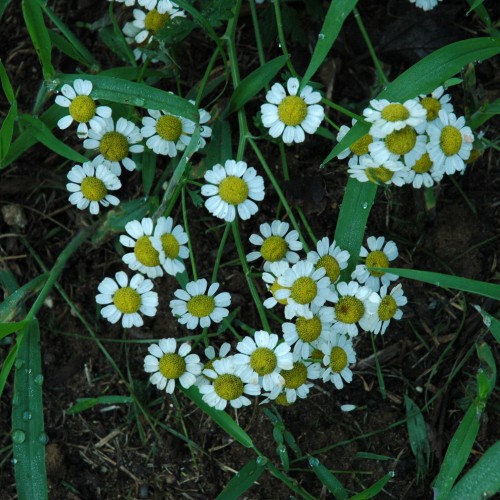
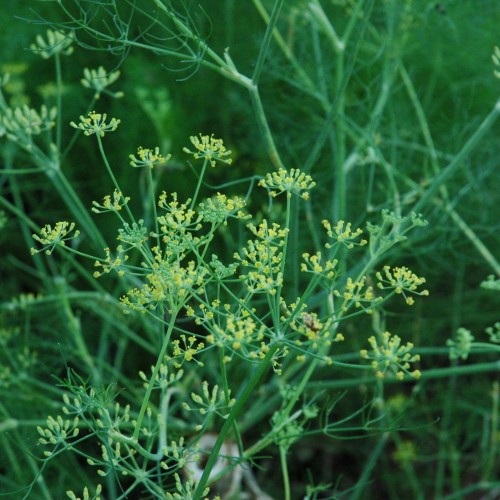
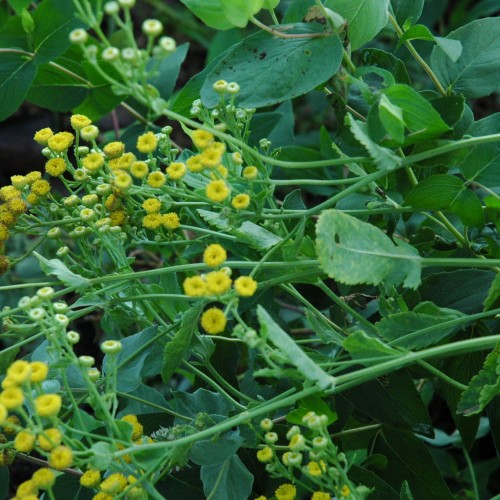
by Kenan White | Jul 10, 2012 | Basics, Gardening, Miscellaneous |
Many people find themselves asking the question, “why use Latin to classify?” When you consider that there are over 250,000 species of living plants worldwide, it makes sense to have chosen a single language to label all these plants. This use of Latin allows gardeners and botanists to speak a universal language when talking about plants. This classification uses a binomial, or two name, system.
The genus is always first and is always capitalized. You may think of the generic name as you would a family name: Smith, Jones or Brown. There are broad grouping of similar plants. These names are almost always derived from the Greek language, but often it is derived from the place it was discovered or even the discoverer themselves. Occasionally, the name comes from legend or mythology. For example, Mint’s genus name is Mentha.
The species comes second and is usually lowercase. Mint’s genus name is Mentha, and if we use Spearmint to further our example, its species name is spicata. Therefore, Spearmint’s binomial classification is ‘Mentha spicata.’
If there is a variation in a species, it is denoted by “var.” Also, if there is a subspecies, it comes third.
Once a plant is cultivated or selected for a certain virtue, then the new plant is considered a ‘cultivar.’ These names are capitalized in single quotation marks.
Hybrids are plants resulting from sexual reproduction between two different types of plants. Hybrids are denoted by an “x.”
Lastly, many plants will be given a common name – this is similar to a nickname and is not a correct or scientific name. Below are a few examples of plants, their nicknames and their Latin names.
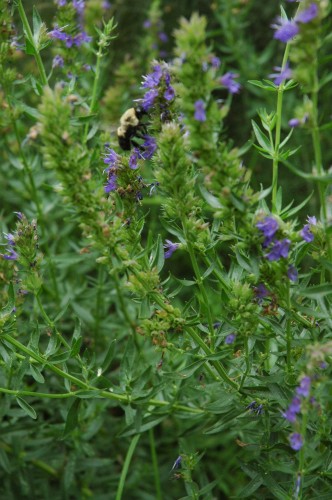
Hyssop or “Agastache foeniculum”
by Kenan White | Apr 25, 2012 | Basics, Books & Design, Flowers, Gardening, Herbs, Inspiration, Life on the Farm, Miscellaneous, Recipes |

We are so excited that our good friend, James Farmer is coming to visit and stay at our farm this week! As part of Virginia’s Historic Garden Week, James is coming to visit and give us an exclusive demonstration on his garden to table arrangements as well as share some of his favorite food and drink recipes from his two books, A Time To Plant: Southern-Style Garden Living, and Sip and Savor, Drinks For Party and Porch, which was just released. James has a wonderful eye for design and has used his talents to bring gardening to a gourmet level. Throughout his elaborate table settings, stunning arrangements and in his Southern-chic food and drink recipes, James incorporates his passion for herb gardening for a refined but “down home” feel. As the most creative new personality in the garden living world, James still stays true to his Southern roots, drawing his inspiration from his family farm in Kathleen, Georgia.
![Time-Plant-Cover-02[1]](https://theherbexchange.com/content/uploads/2012/04/Time-Plant-Cover-021-388x500.jpg)
James Farmers Favorites
To celebrate James’s visit to our farm and his fantastic new book, A Time To Plant, Southern Style Garden Living, we’ve created the James Farmer’s Favorites Herb Collection to offer some of his favorite herb plants! We’ve included Lavender ‘Hidcote’, for its beauty in arrangements or as a garnish, and for its wonderful fragrance and light, floral flavor in drinks and recipes. For a true Southern experience, we added ‘Kentucky Colonel’ Mint, a robust spearmint that grows effortlessly and is the key component to a real Southern tradition, the Mint Julep. ‘Lemon Sweet Dani’ Basil was chosen for its delicate citrus tones and lovely blooming spires, making it perfect for flavoring seafood, salads and garnishing summer desserts. To share a savory note, we also added our Rosemary ‘Arp’, a flavorful, cold hardy, Rosemary that seasons meats, stews and full flavored desserts. (James loves using the Rosemary twigs as skewers for adding fruit kebabs to his delectable drinks!) Rounding out his favorites, are ‘Italian Flat Leaf’ Parsley for its full body flavor and lovely leafy foliage, and ‘English’ Thyme, a classic culinary herb that grew in his grandmother’s kitchen garden and of which he has fond, flavorful memories.
We have even included the option to buy either this collection of six culinary herb plants to get your garden started with Southern style, or the James Farmer’s Favorites Herb Collection AND James’s new book, A Time To Plant, Southern-Style Garden Living, for a lovely added gift.
If you may already have these wonderful culinary herbs in your garden, you can purchase A Time To Plant: Southern-Style Garden Living sold separately. Whether you treat yourself or give this as a thoughtful gift, the James Farmer’s Favorites will be a sure delight for entertaining in the garden and in your home!
by Kenan White | Apr 19, 2012 | Basics, Books & Design, Flowers, Gardening, Herbs, Inspiration, Life on the Farm, Miscellaneous, Urban Gardening |
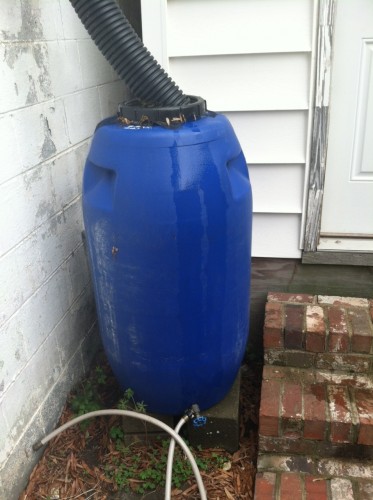
Rain barrels are easy and very inexpensive to make and you'll save lots of water, time and money.
In keeping with our green theme this week for Earth Day on April 22nd, here’s another great project that your plants will appreciate! Our Marketing Director, Caroline and her boyfriend built the one above, for their gardens last summer.
She swears by her backyard barrel, ” This is a great alternative to the chemicals in city water and to paying city water bill prices! My herbs and his tomatoes went wild over this water last summer!”
Reduce your water use considerably by building a rain barrel. Watering your plants with rainwater is better for them than tap water because of all of the minerals that collect in the rainwater that feed the plants. Also, many municipal water systems treat their water with chlorine and fluoride, which can build up in your soil over time and reduce its quality. Watering your gardens may also use quite a bit of water, and especially in the summer when things are extremely dry, some areas institute mandatory water restrictions. Having your own rain barrel also reduces runoff which can carry lots of pollutants back into the water system, and it allows you to have a source of water in a part of your yard that may not have a spigot nearby. A rain barrel will keep your plants healthy and well watered, save water, and save you money! You can also decrease debris and pollutants by installing gutter guards into your gutters around the exterior of your house, companies such as Mastershield Atlanta as well as other companies can provide you with these gutter guards.
Building a rain barrel is easy and very cheap if you have the right resources.
- Start with a large food barrel that you’ve rinsed thoroughly. Place it on top of four cinder blocks that are laying flat on the ground. (This will help to give the barrel more height and better gravity, allowing the water to flow better once it gets to a lower level.) Large restaurants receive shipments of these barrels all of the time, and if you can’t get one directly from them, try looking online. We found the barrel pictured above in a garden listing on Craigslist, and it once held A LOT of olives.
- Using a Dremmel tool or saw, cut a 6″ hole in the top of the lid, so that the center is hollow but you can still screw the cap onto the top of the barrel.
- Take a piece of old window screen and cut it so it just fits the top of the barrel, while still allowing you to screw the top in place. Make sure the screen is well fitting, as this will keep insects and debris out of your water.
- Drill a hole at the bottom front of the barrel that is just slightly smaller than a small spigot that you can find at your local hardware store. Fit the spigot into the hole for a very snug fit (this prevents you from having to use chemicals to seal the spigot into place.)
- Place beneath or connect to your gutter runoff spout. Then, just wait for it to rain! Your barrel will fill with rainwater and you can water your flowers and herb plants with a watering can or by attaching a short length of hose.
by Kenan White | Apr 18, 2012 | Basics, Flowers, Gardening, Growing, Herbs, Inspiration, Life on the Farm, Miscellaneous |

It's actually VERY easy to be green!
“Going Green” is a term that’s often used liberally, and rarely followed through. Written off as an advertising catchphrase or something that “hippies” may be worried about, going green is really about sustainability and choosing to treat our planet better. April 22nd is Earth Day and as a gardener, grower, and outdoorsman, I have a very deep respect for our planet and its natural resources. In sharing a love of gardening and growing plants, I believe we all share the similar belief that we should cherish and preserve the natural gifts that we’re given. Luckily, there are a number of things that people can do to try and conserve the environment. One of the most effective things that people can do to help this issue is to consider switching to solar energy. To compare energy prices, it might be worth visiting an online comparison website. That could really help the environment, so people can learn more here if they’d like to go green. Hopefully, more people can start taking care of the environment.
We stay green at The Growers Exchange by composting excess plants and incorporating organic matter from our cattle. We try to use as little packaging as possible when shipping your plants, and the peanuts we use for packing are made of cornstarch and are biodegradable. We grow our flowers and herb plants without the need for high powered commercial insecticides and sprays, instead opting for applications that are plant based. Around our farm we grow warm weather grasses and leave plenty of buffer area between us and the James River to help filter runoff. We replant and replenish trees around our farm after natural disasters blow through (like Hurricane Irene last year) that knock mature trees down. We then used the downed trees to heat our greenhouse this past winter. These are just a handful of the ways we remain a green company in our daily practices.
Although we should incorporate more ways to conserve everyday, Earth Day is a great chance to reaffirm those sustainable practices. This week, we’ll be sharing gardening tips and ideas on going green.
What ways are you gardening sustainably in your own garden and going green in your community?
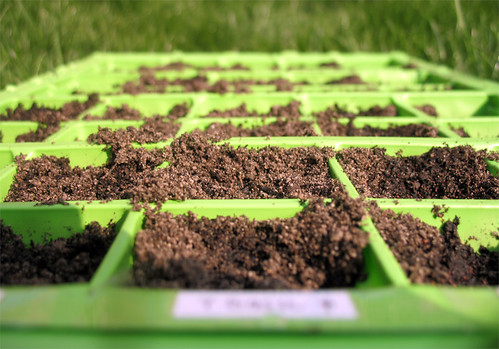








![Time-Plant-Cover-02[1]](https://theherbexchange.com/content/uploads/2012/04/Time-Plant-Cover-021-388x500.jpg)

